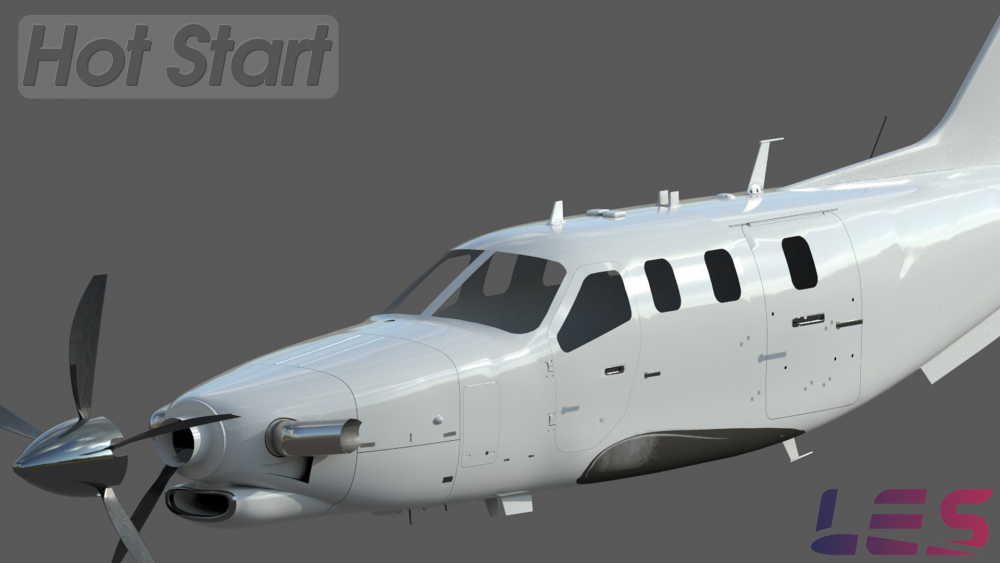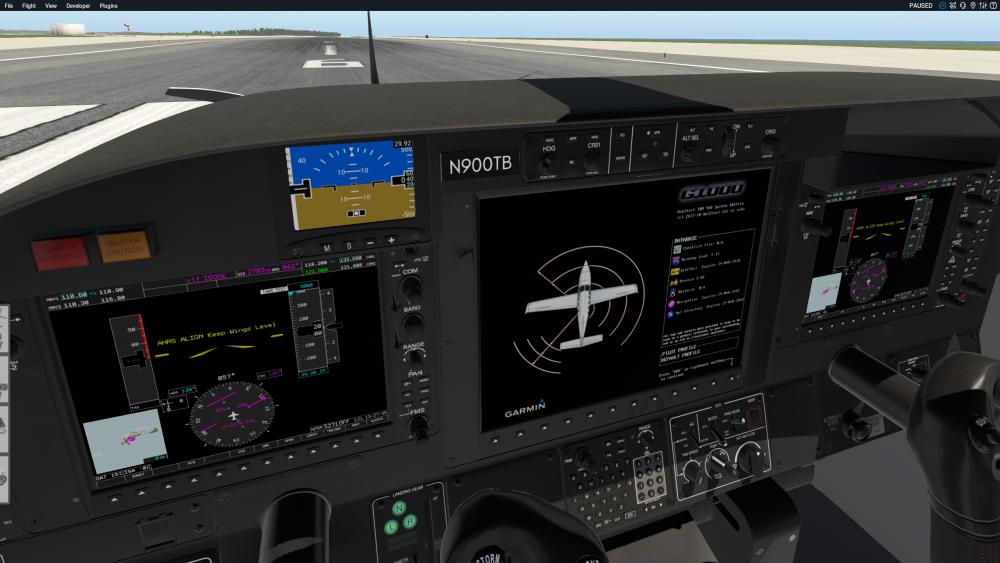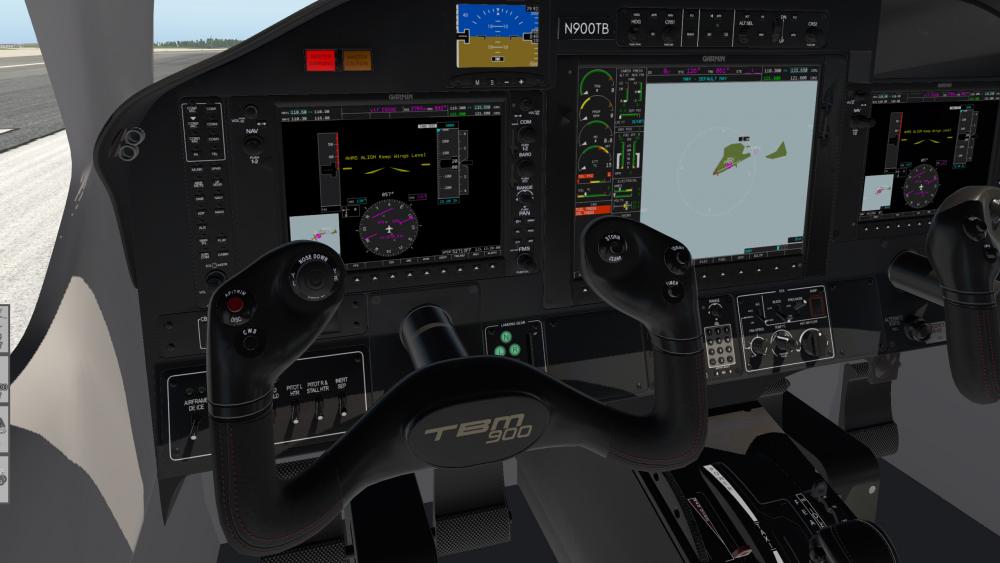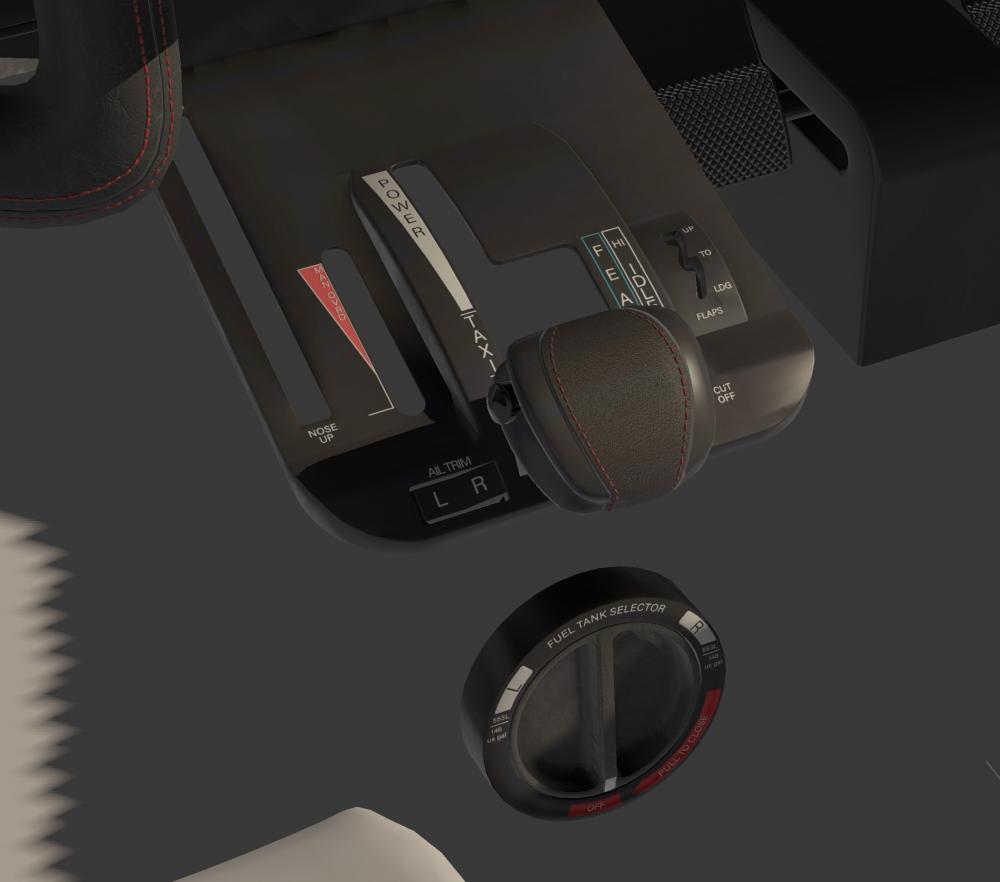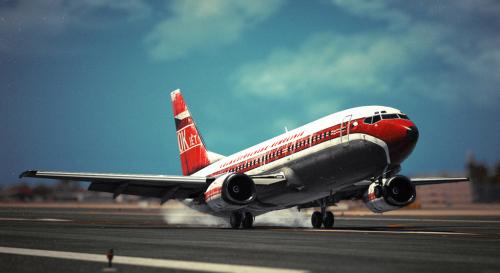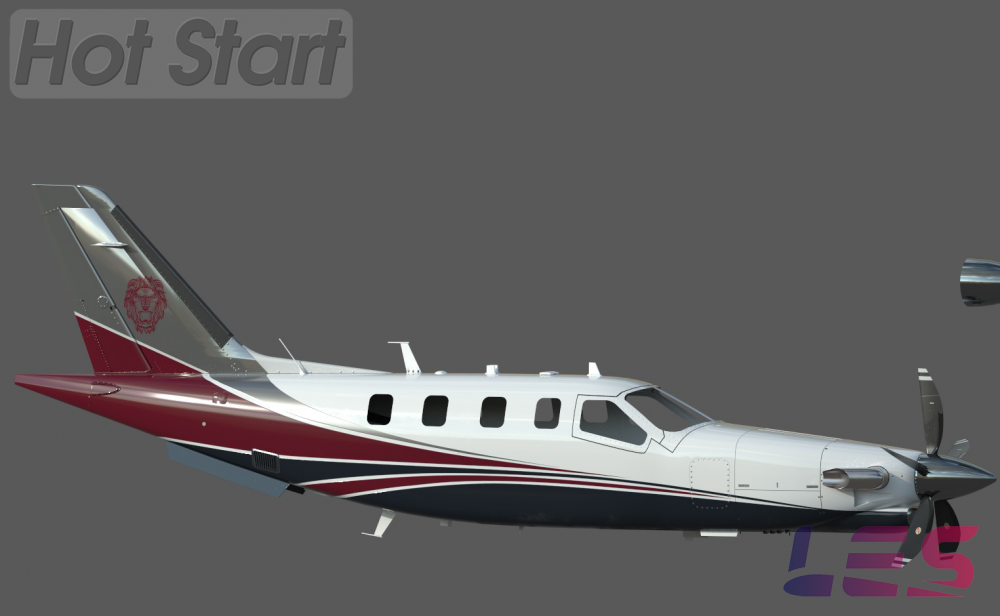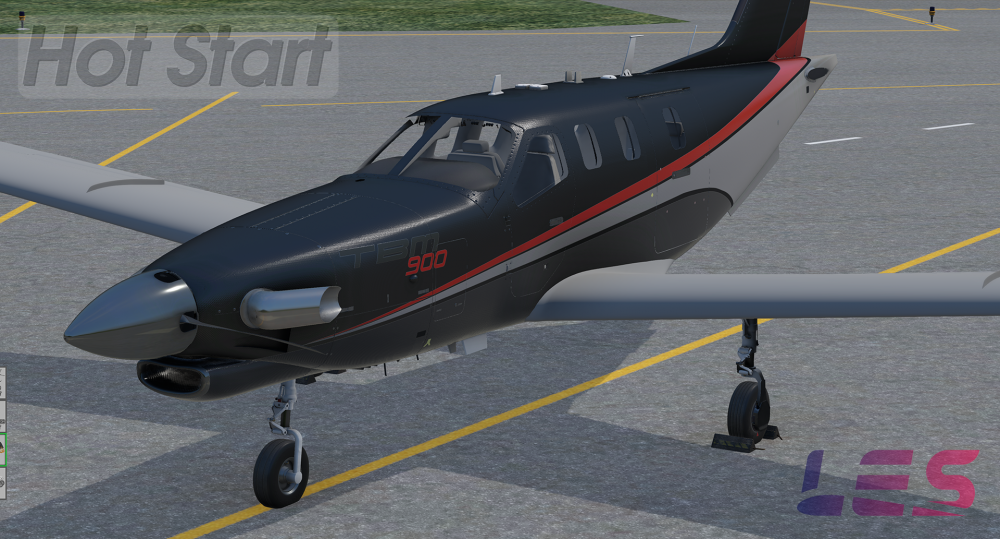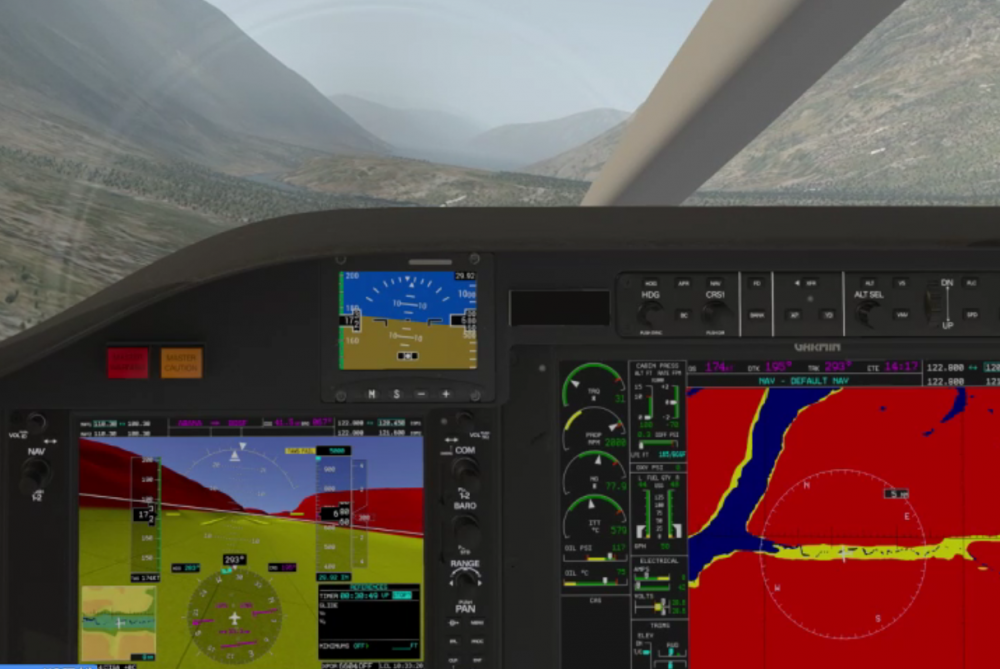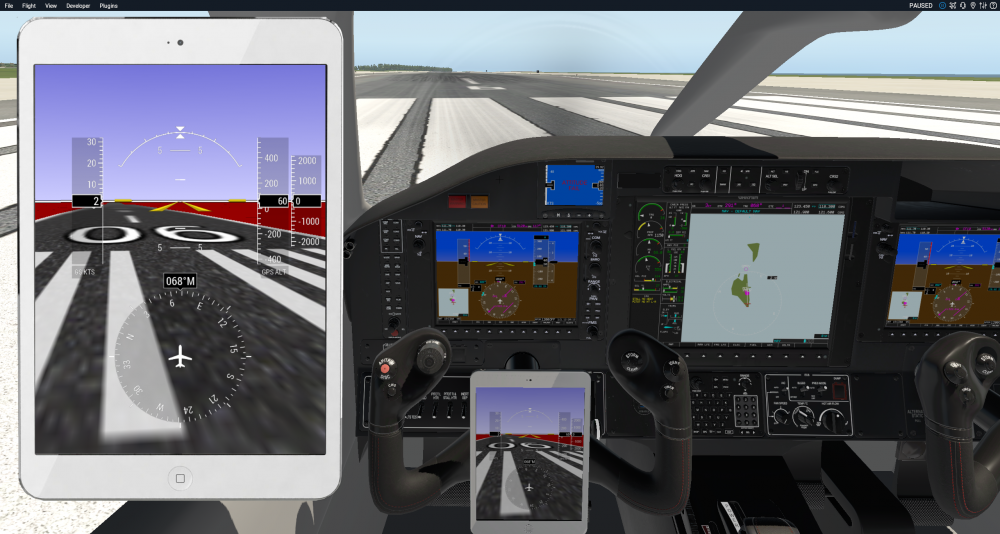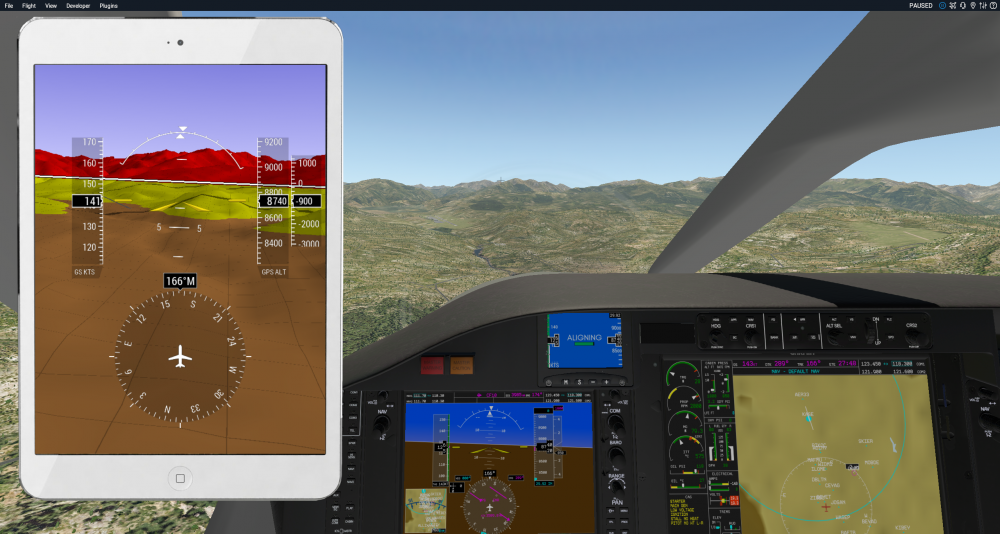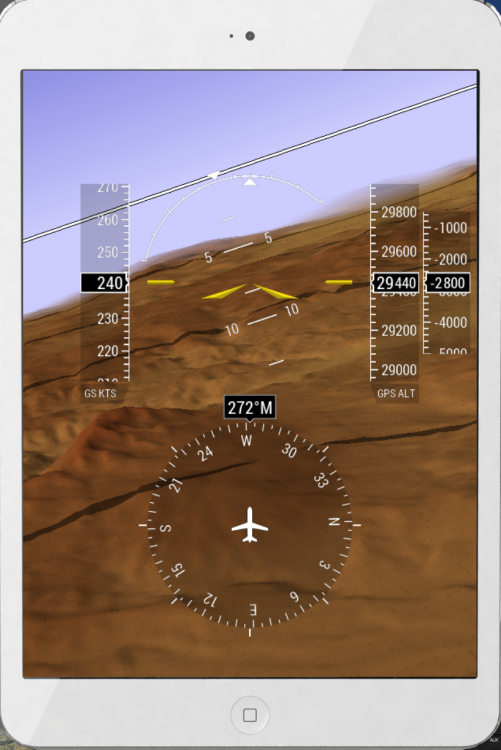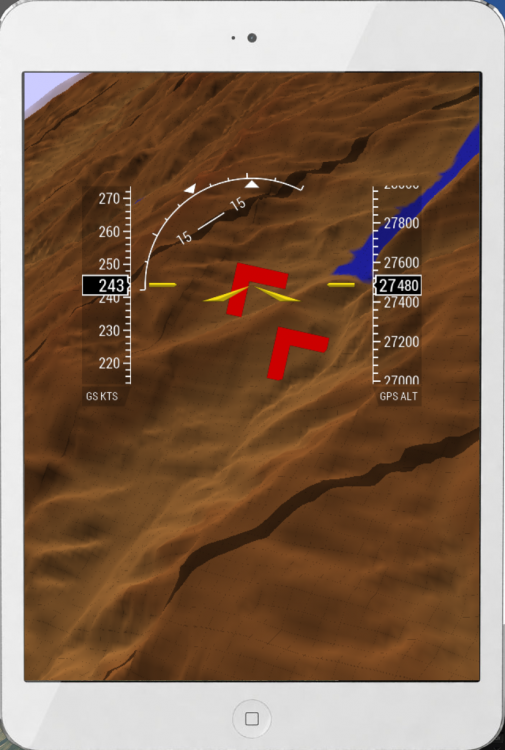Leaderboard
Popular Content
Showing content with the highest reputation on 05/23/2018 in all areas
-
1 point
-
Captains, Today we're excited to announce a new developer to the commercial market! HotStart is the name, and the first product will be a very detailed Socata TBM 900. This particular product will also be jointly created with Goran Matovina of Leading Edge Simulations for the 3D modeling portion. The goal for release time as it stands is early summer of this year, so the wait won't be too long and we'll continually post updates here to ensure you can keep up to date. The HotStart TBM 900 will be a high-fidelity simulation of the TBM 900 high-performance single-engine turboprop aircraft. The model features a persistence system and wear & tear on all aircraft components to simulate the experience of owning and caring for the aircraft. All simulation state is fully persisted across reloads, so performing proper shutdown and cleanup after a flight is imperative. Shortlist of features: Heavily multi-threaded systems architecture to leverage performance of modern CPUs with many cores. Flight model tuned to perform to within a few percent of the real aircraft in the normal flight envelope, including maximum and stall speeds, rate of climb, fuel burn, trim behavior and control feel. Full aircraft state persistence. Every switch, flight control position, fuel state and on-airport position is restored upon reload. Even between reloads, system resources change in real time. The engine and oil cools down slowly between flights, the battery drains, tires slowly deflate, etc. Fine-grained systems model, down to individual sub-components. The always-on failure system realistically responds to wear & tear and overstress for each sub-component based on individual load factors. Over-torque, over-temp, frequent starts, hard landings, operating in FOD-contaminated environments and many more all affect individual sub-component wear & tear and service life. Sub-component wear realistically reflects on aircraft performance. Worn engine parts reduce maximum available power, worn prop reduces top speed, worn tires result in worse grip during ground ops, etc. Aircraft maintenance manager to inspect and repair or replace any damaged sub-component. The maintenance manager tracks per-airframe operating expenses in a realistic manner to show the real cost of operating the aircraft. Airframe manager that allows you to operate multiple simulated airframes, each with their own independently tracked wear & tear, livery selections and custom registration marks applied. Airframes can be automatically synchronized between multiple machines over the network with just a few clicks. This automatically syncs up aircraft position, configuration and wear & tear to simulate multiple users sharing the same physical aircraft. See how your fellow pilots treated the aircraft by checking the maintenance manager and engine trend monitoring outputs. X-Plane 11 G1000 avionics stack with lots of customizations and overlays to simulate the special extensions in the real TBM900. This includes a custom EICAS, systems synoptic pages and special integration with the extra simulated systems such as the weather radar, TAS, electrics, etc. Fully custom electrical system. Simulation of all buses, switching behaviors and reconfigurations. Full circuit breaker system, integrated with the X-Plane failure system, so a failed or failing system can pop a breaker. Highly accurate PT6 engine model with realistic startup and operating behavior. Engine lag, secondary fuel flow, ITT evolution, response to auxiliary load and many more fine-grained behaviors. Custom prop governor, with all modes simulated, including electric auto-feather with negative torque sensing. Crew Alerting System integrated into the avionics stack with all annunciations, takeoff/landing inhibits, flight state filters and "corner cases" simulated. Environmental Control System integrated into the custom EICAS. Air conditioning and pressurization respond in real time to environmental factors such as ambient temperature, pressure, available engine bleed air, cabin temperature setting, cabin pressure vessel failures, etc. Custom TAWS-B ground proximity warning system with all annunciations modes, inhibits, real-time impact point prediction and terrain painting up on the MFD to ranges of 200NM. The TAWS-B uses the X-Plane terrain DSF data to construct its database, so it is always "up to date". GWX 70 weather radar with weather & ground modes and realistic radar return painting. Full simulation of radar beam energy dissipation, signal attenuation when passing through dense weather and vertical cell analysis modes. Terrain mapping accurately paints surface features, including recognizable peaks, valleys and lakes. Supports the X-Plane 11 default atmospheric model as well as xEnviro. GTS 820 Traffic Advisory System (TAS) with aural alerts + visual alerts, the TAS MFD page and compatibility with X-Plane default traffic, PilotEdge, Vatsim and IVAO. Full simulation of the ESI-2000 standby instrument, including all configuration pages, sensor failures, AHRS drift and "roll-over" during extreme maneuvers, realistic battery operation and real-time battery depletion, etc. Dynamic custom registration mark paiting on the fuselage and instrument panel with support for custom TrueType fonts, colors and positioning. This lets livery painters make a "generic" livery and each pilot apply their own custom registration mark with just the click of a button directly in the simulator. Liveries can specify a custom position and font to optimize the look. Custom sound engine with samples from the real aircraft and accurate modeling of individual engine states and sub-component noises such as fuel pumps, gear pumps, flap actuators, etc. Just to start, we're including some work in progress screenshots below. Remember, work in progress means things are continually being added, both in 3D and programming. Thanks for stopping by!1 point
-
Most of the issues which I have with your aircraft is related to the functionality, 75 USD is a high price to quote unless you think people are paying that money for eye candy. Let us do this in a structured manner shall we. First, the Frames are unbelievably jumpy that is an indication of unoptimized programming. The VNAV is still majorly buggy. VNAV SPEED and PATH can be selected but the integration is poor and doesn't follow the FCOM, there is no provision for STEP CLIMB. Apparently your FMC don't feature a CAPTURE mode. FMC functions by agility tuning which cannot be verified unless the NAV STATUS page is simulated. Speed restrictions cannot be set in the FMC using the DESCENT page, there is a way to do that dial in the speed you want and press ERASE yes you herd me right ERASE NOT EXECUTE. Sometimes VNAV wouldn't engage even when all the parameters are met. VNAV engagement without LNAV till the aircraft is maintained with in the RNP depending on the section of your leg is not simulated. IRS alignment 2nd pass test not done properly check the FCOM for further details. SPEED mode in MCP IS buggy takes a while before the plane realises it has slowed down too much, CUSTOM WAYPOINTS not simulated, OFFSETS and HOLD patterns are a known issue. Right now I am in the process of reading the FCOM just finished 100 pages in the NAVIGATION section and so many issues came up. Then did not mention which version, revision and update version no. of the FMC is simulated. FMC logic with the radios are okay but because of the primitive nature of the radio I cannot manually select the DMEs I want the FMC to use during alignment as reference. Progress page is just depressing quite honestly. Alternate destination has issues as well. VNAV speed and path cannot be interchangeably used if I do that it messes the VNAV path. During level change climb sometimes if I want to reengage VNAV it wont engage. I'm really sorry but the aircraft is not well done and don't use study level because its just not. I seriously regret spending the money. I'm certain in days to come I will find even more bugs as and when I learn about the systems. Every page in the FMC has something or the other missing. Your aircraft is quite frustrating. The ZIBO mod does a better job than you. I'm really sorry but its not even close to a pay ware and you are charging 75 USD.1 point
-
Yes, 75 USD is a high price for a virtual aircraft (costing more than the simulator itself), so that puts a certain demand on the quality of the product. I can confirm that as my only XP aircraft, the IXEG 737 creates a jerky movement in the picture which is very noticeable when taxiing and looking out of the captain's window and also outside view of the aircraft. The stutter occurs every 750 ms or so and is not related to overall fps. As for the VNAV functionality, this is of course disappointing that it doesn't work properly given the price tag. So the FMC/FMS needs the biggest overhaul, but reading posts on this forum I know that IXEG are well aware of this. With a lack of proper ATC, VNAV is important, or shall I say convenient, when flying STARs. The OP mentions the 737 Zibo mod, but even in the latest version, I found that VNAV didn't work properly there either. And even PMDG's VNAV fails, albeit rarely. The IXEG 737 looks fabulous, and the flight model is very good. The aerodynamic feel and feedback from the plane is probably unrivalled on the market, especially during landings. All the 737s are quite nimble in handling in real life and I think the IXEG 737 exhibits this as well. I think something in X-Plane v 11.20 didn't go well with the IXEG 737. I've tested the aircraft twice, and both times, it had thrust issues with different power readouts and performance (on my first attempt, the plane nearly swapped ends on the runway due to the difference in thrust between the engines) and difference in N1/N2 performance and fuel consumption. See the attached image for the readouts, this at cruise level.1 point
-
1 point
-
1 point
-
1 point
-
1 point
-
Wow! Thanks! Yessir. Everything will be done to the best of my ability.1 point
-
1 point
-
1 point
-
Feature update for you good people. We've implemented the G1000 Emergency Descent Mode. That means no more setting up the simulator and walking away to take a nap. A brief demonstration: https://www.twitch.tv/videos/253395611?t=02h40m35s Now the avionics is watching for pilot alertness. The allowable time interval for pilot interaction is altitude dependent, but varies from 20 minutes at 15,000 ft down to around 8 minutes at FL310 (decreasing exponentially, so only about 10 minutes at FL250). If pilot inactivity is detected for the aforementioned period if time (no buttons pushed or knobs actuated on the G1000 avionics), the avionics will start a graduated process of alertness checks: First it issues an advisory CAS caution + one aural chime:"ARE YOU ALERT?". The pilot has one minute to respond by pushing any button or clearing the caution via the attention getters. After 1 minute passes and the pilot hasn't responded, the system issues a non-advisory caution saying "HYPOXIA ALERT". Non-advisory CAS cautions different from advisory ones in that the message stays blinking and the yellow "MASTER CAUTION" button stays illuminated. The pilot again has 1 minute to respond. Final call, the system issues an "AUTO DESCENT" master warning CAS message, illuminates the red MASTER WARNING button and a continuous aural chime is heard. If the pilot doesn't respond for one more minute, the red "EDM" AFCS mode is annunciated on the PFD, the autopilot preselects 15,000 ft altitude, switches to the FLC pitch mode to initiate a descent and selects maximum airspeed. On descent the engine will over-torque without the pilot making power adjustments, but the torque limiter can hold the engine at 108% safely for several hours, so it's a small price to pay for regaining consciousness. During descent, the system ignores pilot input. The only way to disable EDM mode at this point is to disengage the autopilot. Upon leveling off at 15,000 ft, the system resumes monitoring for pilot input for 4 minutes. If during those 4 minutes the pilot touches the avionics, EDM mode is canceled. If not, a second descent to 12,500 ft is initiated after the 4 minute timeout. The system now ignores pilot input and descends down to 12,500 ft remains there. At this point, the only way to disable EDM mode is to disengage the autopilot. That's all for now folks!1 point
-
So I thought I might share some screenshots of a new feature that's being developed for the aircraft: terrain synthetic vision. This was always one of our aspirational goals, but we couldn't get it to show underneath the PFD symbology due to a lack of programming interfaces to the stock X-Plane G1000 to accomplish such a thing. So we've done the next best thing: we've added a tablet to the yoke (which you can hide/show separately) and modeled the synthetic vision system (SVS) modeled loosely on the SVS of ForeFlight: It is still a work in progress, but among the features are of course dynamic terrain display, with automatic mesh detail rescaling for terrain that's far away from the aircraft in order to keep the performance high, background terrain loading from X-Plane DSF files and also neat little things, like dynamic runway number rescaling on approach, so you can more easily identify close parallel runways: Part of the SVS is of course relative terrain height indication by dynamically coloring in any terrain that's close to our height, in this case yellow for terrain that's less than 1000 ft below the aircraft and red for terrain that's less than 100 ft below the aircraft. Terrain more than 1000 ft below the aircraft is colored in using the absolute height scale employed by the Garmin G1000 (basically, the lower to sea level, the greener and the higher the terrain, the browner). In the screenshot below, we're on approach to Aspen, so approximately 7000 ft above sea level. Notice that we have a 200m-scale north-south-east-west grid pattern overlaid on the terrain. This helps terrain shape recognition, make recognizing motion to the terrain easier and also gives the view a sense of scale. When high up, it's useful to know your gliding range in case of an engine out. We have range rings placed at 3, 5, 10, 20, 30 and 40 NM (the dark bands in the screenshots above and below). The range rings dynamically adjust to terrain contouring, helping both in terrain shape recognition as well as knowing how far the aircraft can reliably glide before running out of energy: The SVS includes an auto-declutter display mode, where the compass rose and VS indicator momentarily disappear during extreme bank & pitch angles, to help you recover from abnormal flight attitudes: As I anticipate a question about integrating a web browser, let me preemptively answer that so far we're not looking into this. And that's all for now folks.1 point
-
No, this is a different feature. It allows you to synchronize the maintenance state of the aircraft between two computers. The purpose is to enable things like FSE groups to cooperate in the use and maintenance of a single persistent aircraft. Another possibility is if you own multiple computers with X-Plane installed, you will be able to keep all copies of the aircraft synchronized. Ultimately, the idea is to teach users that even if you're not flying the aircraft, somebody else might be, and therefore when you get it into your hands the next time, you need to perform all the proper checks, tests and watch out for faults that you might not have caused, just like you would in the real world. No more of the "I know it's gonna be fine, because it was fine the last time I flew it". Well, you don't know how the previous pilot treated the aircraft, so you better make sure you take that detail into consideration.1 point
-
The algorithms for wear estimation are based on a mixture of real world performance data, operational procedures and an approach "from first physical principles" where we don't have exact behavioral data available. So for example, the engine's ITT behavior is tuned from real ETM data, as is the behavior of the oil temperature at the main oil pump outlet (what you'd see as "oil temperature" in the cockpit). Other parts of engine heating are based on a bit of physical simulation and a healthy dose of hand-tuning to get it to be have sensibly. The "from first principles" approach was used extensively while designing the ECS logic. We know the overall compressor pressure ratio of the PT6 (~14), which the aircraft simulation then feeds as an input to compute adiabatic compression heating of the compressor discharge air. Then we follow that up with energy computations for air heating/cooling and cabin volume pressurization. These are then fed to the simulated air system controller, which takes these sensor inputs and adjusts the various ECS valve positions. So when you are seeing the valve positions change on the displays, it's not just a simulated bunch of "feel good" animations, it really is the air system controller "fighting" in real time with the physics simulation to try and keep the cabin at a sensible temperature and pressure, much like the controller logic in the real airplane does. However, we make no claims that this is a physics simulation package, nor that all the behaviors are perfectly accurate or that the model is in any way suitable for real world training.1 point






